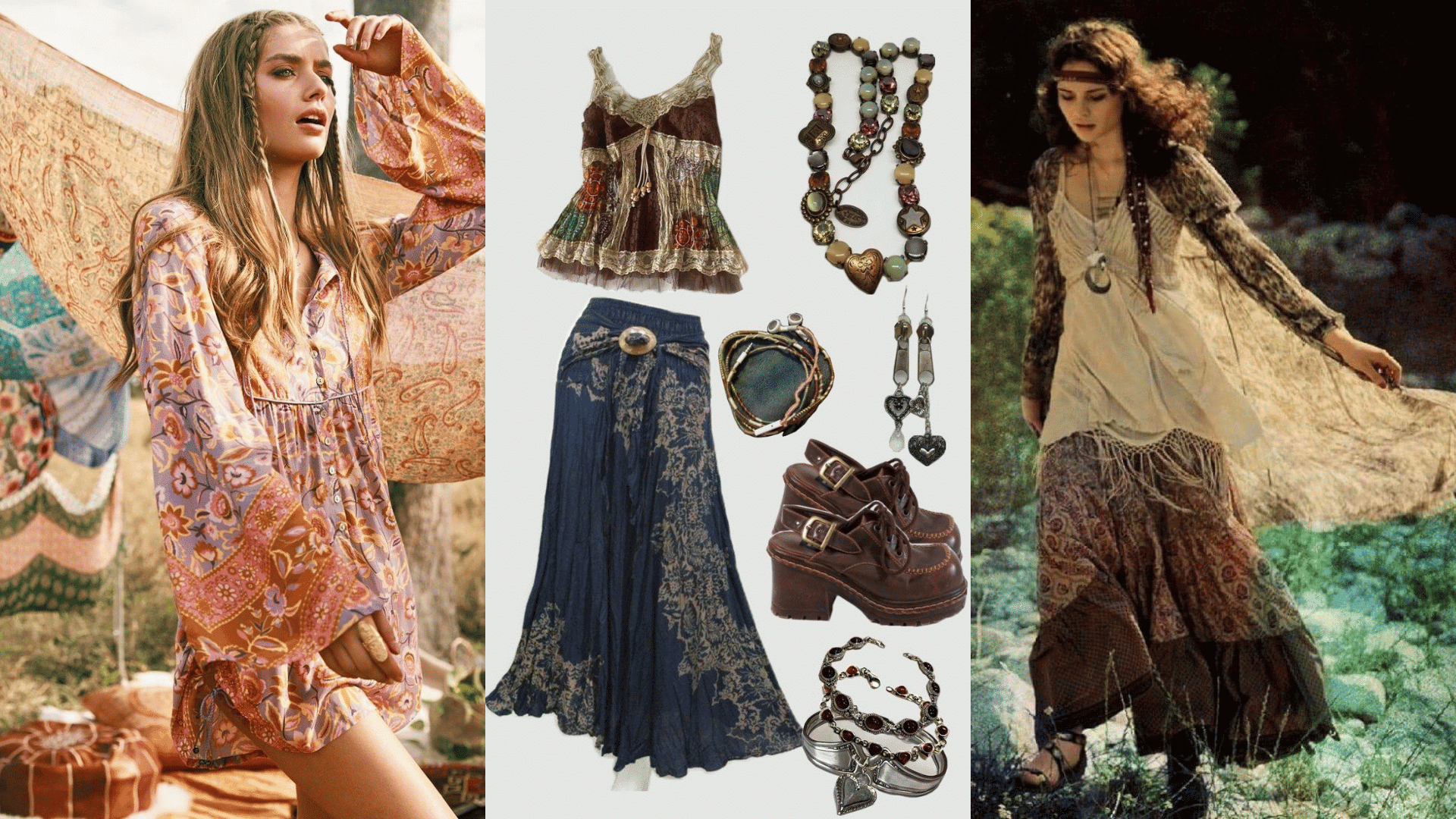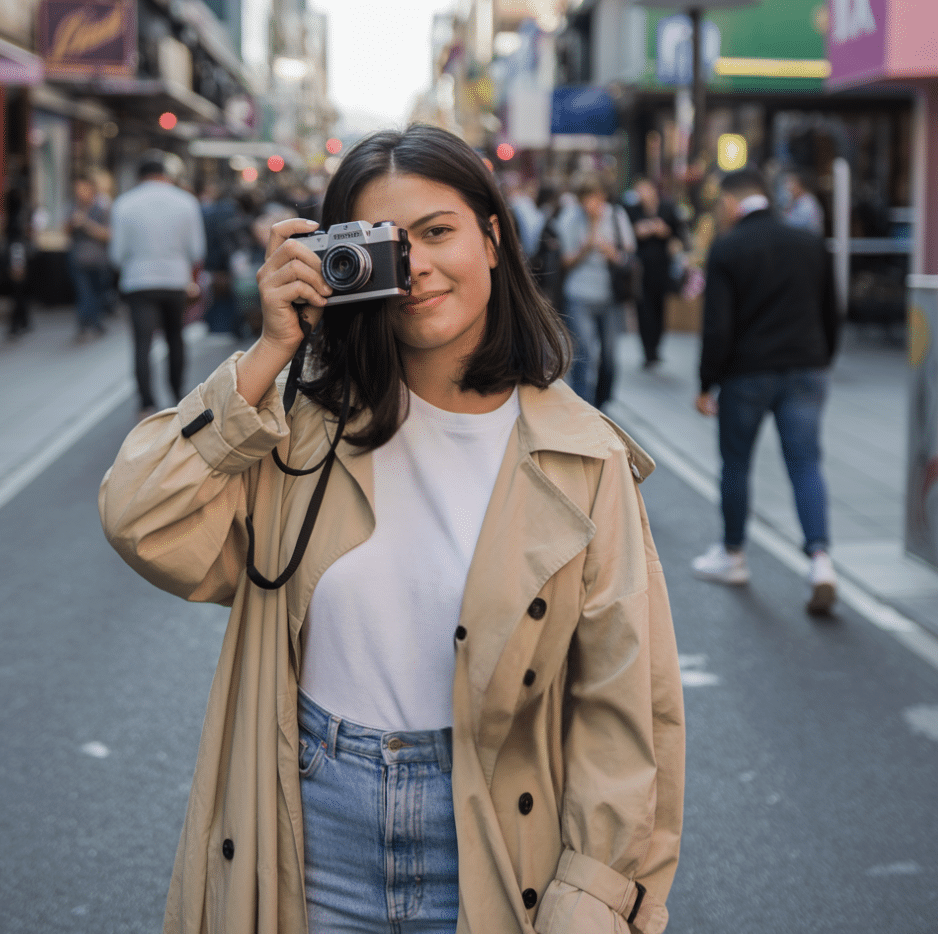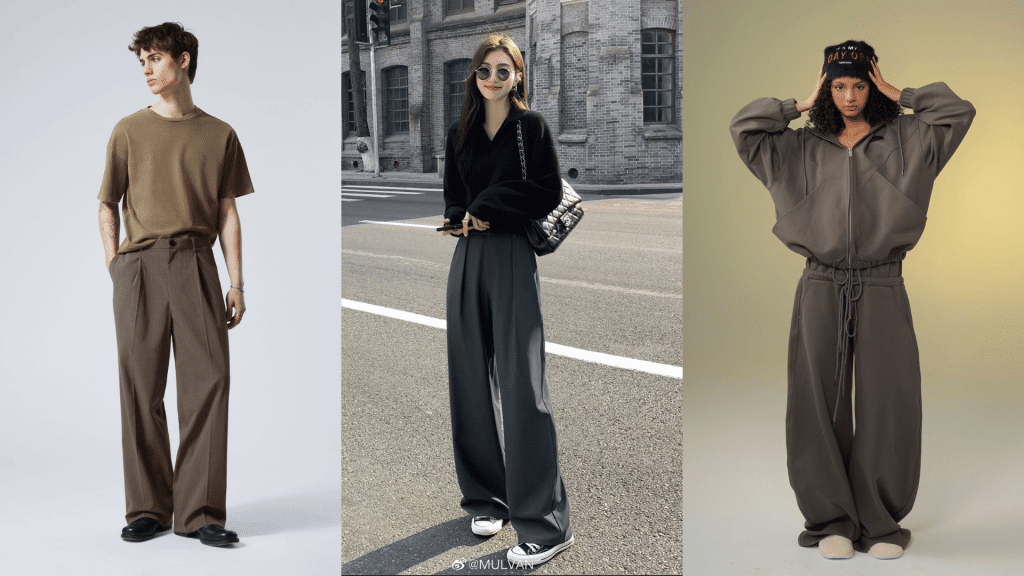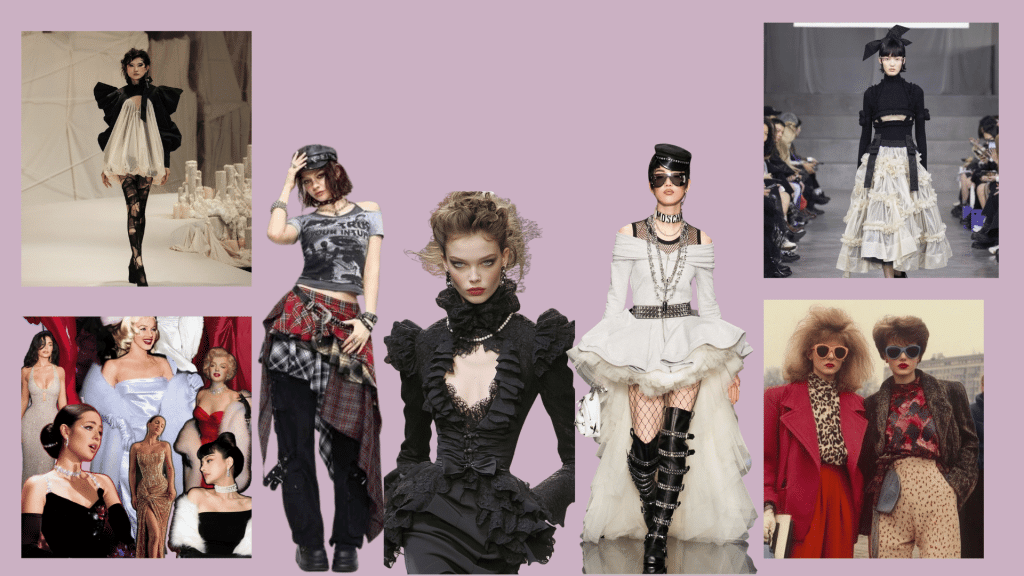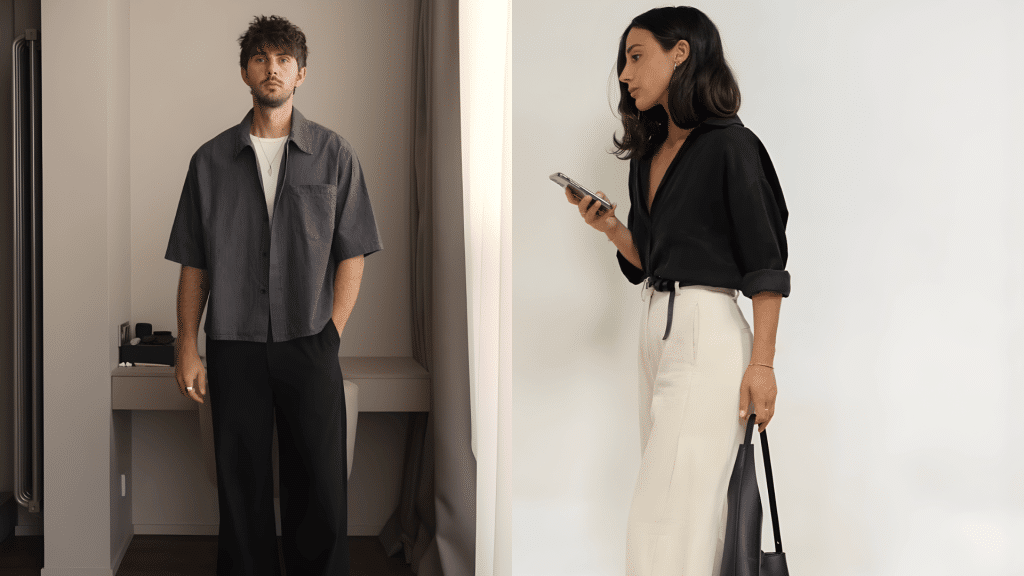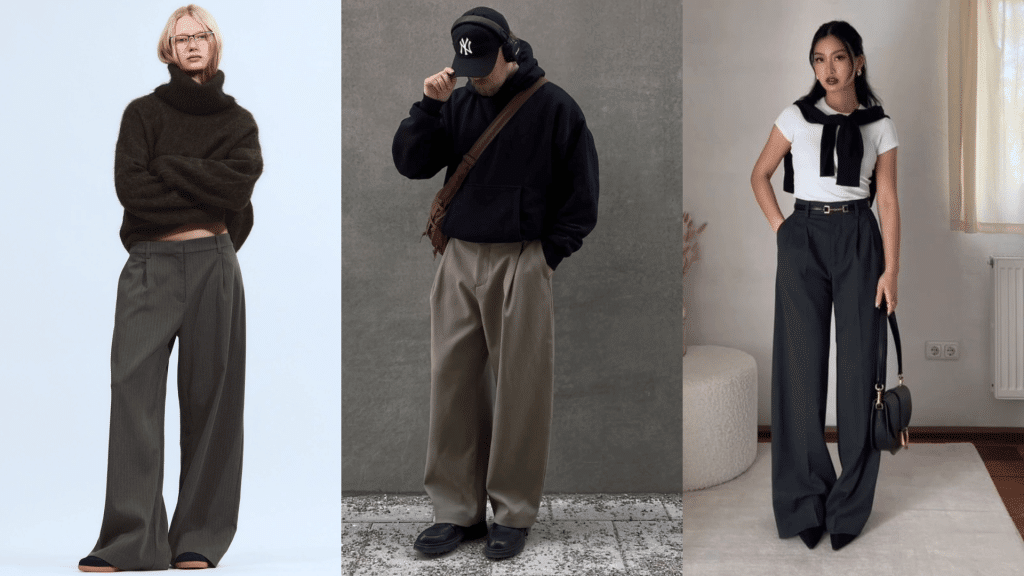The 1960s witnessed one of fashion’s most radical periods of growth, as young rebels traded tailored suits and structured dresses for flowing fabrics and lively patterns.
The 60s hippie fashion scene created looks that celebrated freedom, peace, and individual expression through bold colors, natural materials, and unconventional styling.
What started as a countercultural rebellion soon influenced mainstream fashion, leaving a lasting impact that continues to influence modern designers today.
Ready to understand how flower children changed fashion history and created styles that continue to shape contemporary trends decades later?
What Sparked the Hippie Revolution of the 60s?
Young people in the 1960s were tired of looking like their parents. While mothers wore pearls and fathers donned suits, a whole generation was ready to break free from stuffy fashion rules.
The Vietnam War changed everything. Young Americans opposed the war and started dressing differently to show their protest.
Out went clean-cut looks, in came long hair, flowing clothes, and anything that screamed peace, not war.
Middle-class kids had money to reject expensive, formal clothing. Instead, they chose cheap, colorful, comfortable pieces that felt close to home.
Bright colors, patterns, and flowing fabrics felt more meaningful than structured, conservative outfits.
Eastern cultures intrigued these young rebels. They borrowed ideas about peace and spirituality through natural fabrics and handmade accessories.
This perfect storm created hippie 60s fashion that changed how people dressed forever.
Influences and Motifs of Hippie 60s Fashion
Hippie fashion in the 1960s was shaped by a wide range of cultural, political, and artistic forces. Every motif carried meaning, changing clothing into a reflection of values, beliefs, and identity.
| Influence / Motif | Key Elements | Meaning and Impact |
|---|---|---|
| Eastern Spirituality and Culture | Flowing kaftans, Indian tunics, yoga-inspired garments, mandalas, symbolic prints, and hand-dyed fabrics from India and Asia | Introduced vibrant colors symbolizing peace, harmony, and inner freedom; brought a new spiritual and visual language into hippie style |
| Native American and Folk Traditions | Fringe jackets, moccasins, beadwork, patchwork skirts, embroidered blouses | Expressed simplicity, rawity, and respect for heritage; celebrated craftsmanship and a return to nature |
| Psychedelic Art and Music | Swirling paisley prints, neon colors, kaleidoscopic patterns, bold experimental designs | Reflected hallucinatory experiences and the boundary-pushing spirit of the era; turned clothing into wearable art inspired by concert posters and album covers |
| DIY and Anti-Consumerism Ethos | Tie-dye T-shirts, crocheted tops, hand-painted denim, personalized wardrobes | Celebrated creativity, individuality, and rejection of mass production; emphasized self-expression and handmade fashion |
Threads of Rebellion that Defined Hippie Style
The hippie movement wasn’t just about music, protests, or ideals; it was also about the clothes that turned everyday youth into walking symbols of peace and freedom.
These are the core features that defined a generation and still inspire style rebels today:
Garments: The Foundations of Hippie Style
Clothing was the cornerstone of hippie identity, reflecting the movement’s love for comfort, individuality, and cultural fusion. From flowing silhouettes to handcrafted details, garments told stories of rebellion and freedom.
- Bell-Bottoms and Flared Jeans: A rebellion against straight-laced tailoring, these wide-legged pants were comfortable, unisex, and perfect for dancing at festivals.
- Maxi Dresses and Peasant Skirts: Flowing, colorful, and often handmade or embellished with embroidery, these garments symbolized freedom of movement and femininity.
- Tunics and Kaftans: Inspired by Eastern and bohemian traditions, these loose-fitting pieces became staples of the counterculture wardrobe
- Tie-Dye Shirts: The ultimate DIY statement, each swirl of color was a manifesto of individuality and creativity.
Accessories: Symbols Worn with Pride
Hippie accessories were never just add-ons. They were loaded with meaning. Each necklace, crown, or headband doubled as both a political statement and a spiritual symbol.
- Beaded Necklaces and Peace Symbols: Jewelry wasn’t just decoration. It was a political statement promoting love and anti-war ideals.
- Headbands and Bandanas: Worn across the forehead or tied around the hair, they gave a bohemian edge and kept long hair in place.
- Flower Crowns: Flower power made literal, fresh blooms woven into headpieces symbolized peace, nature, and beauty.
Natural and Free Hairstyles
Hair in the 1960s was more than a beauty choice; it was a cultural statement. Hippies cherished natural, untamed styles that stood in stark contrast to the polished, mainstream society.
- Long, Loose Hair: Worn straight and natural, often parted in the middle, it symbolized freedom from rigid beauty standards.
- Braids and Plaits: Simple, earthy, and practical, often accented with beads or ribbons.
Ultimately, hippie hairstyles completed the look, turning the body itself into a canvas for self-expression, rebellion, and unity with nature.
The Colors of the Hippie Movement
Color was at the very heart of the hippie identity. To the youth of the 1960s, fashion wasn’t just about fabric; it was a canvas for rebellion and self-expression.
Vibrant hues and earthy tones carried messages of peace, love, and a connection to both nature and psychedelic culture.
|
Element |
Meaning and Style |
|
Psychedelic Vibrance |
Neon pinks, electric blues, swirling patterns, and tie-dye symbolized freedom, creativity, and the psychedelic spirit of the 60s. |
|
Earthy Naturals |
Shades of brown, green, and tan connected hippies to nature, often seen in hemp, linen, and handmade clothing. |
|
Symbolic Shades |
White for peace, red for passion and revolution, yellow and orange for joy, and green for harmony with the earth. |
Hippies used color to signal belonging to a movement bigger than fashion. Their palette reflected not only their style but also their ideals: peace, freedom, and unity.
Bringing Hippie Fashion Into Your Wardrobe
Recreating 1960s hippie fashion today is about blending comfort, color, and individuality. By combining key pieces with meaningful accessories and natural styling, anyone can channel the free-spirited energy of the era.
Step 1: Start with Key Pieces
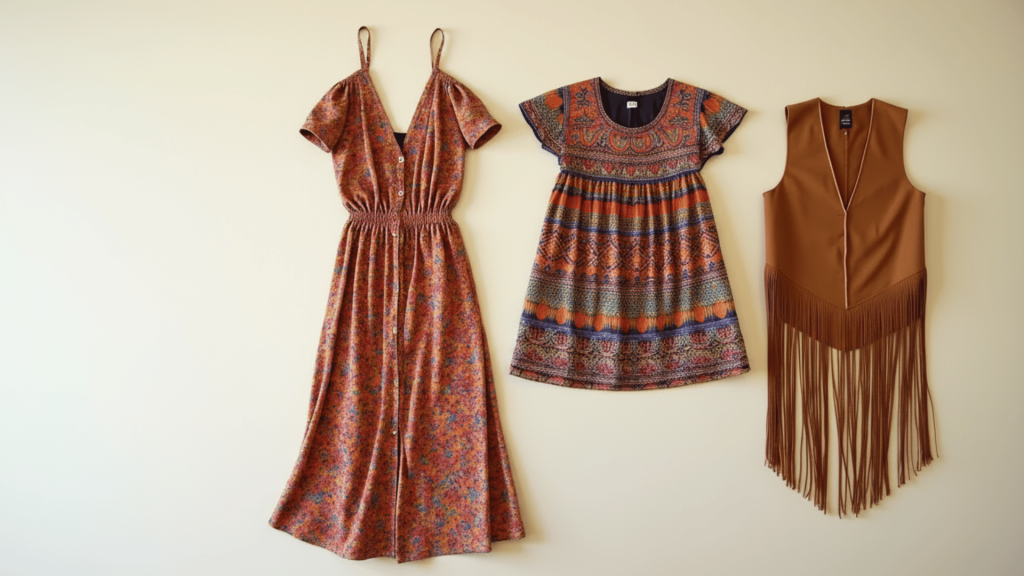
Choose statement garments like bell-bottoms, flared jeans, maxi dresses, or peasant tops. Stick to flowing cuts that bring ease and movement.
Pro Strategy: Thrift a pair of vintage jeans and add colorful patchwork or embroidery for a one-of-a-kind look.
Step 2: Cherish Natural Fabrics and Colors
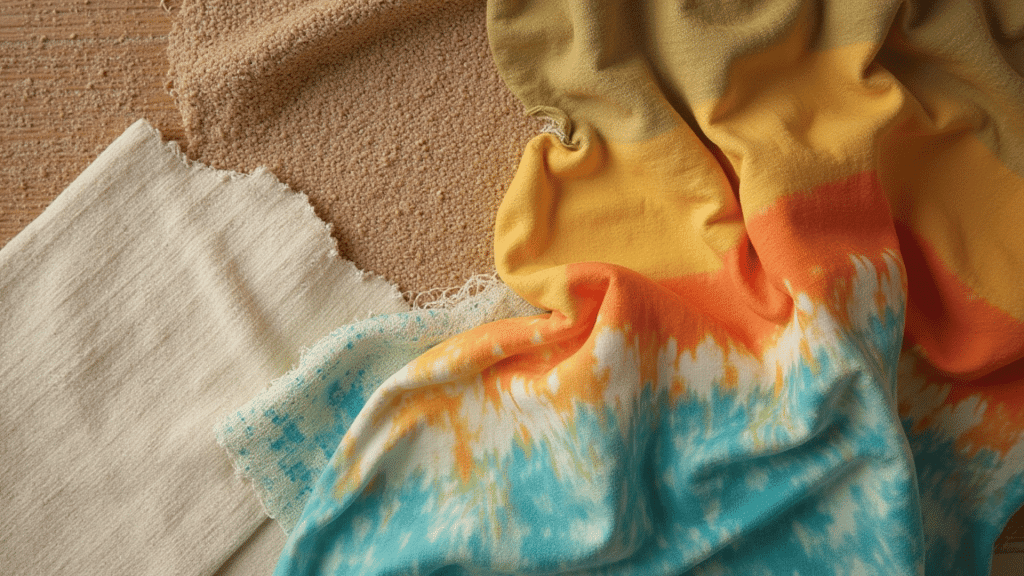
Opt for breathable fabrics such as cotton, hemp, or linen. Balance earthy shades with pops of psychedelic prints or tie-dye for that raw fashion vibe.
Pro Strategy: Try a DIY tie-dye session using natural dyes like turmeric, beetroot, or indigo.
Step 3: Layer with Accessories
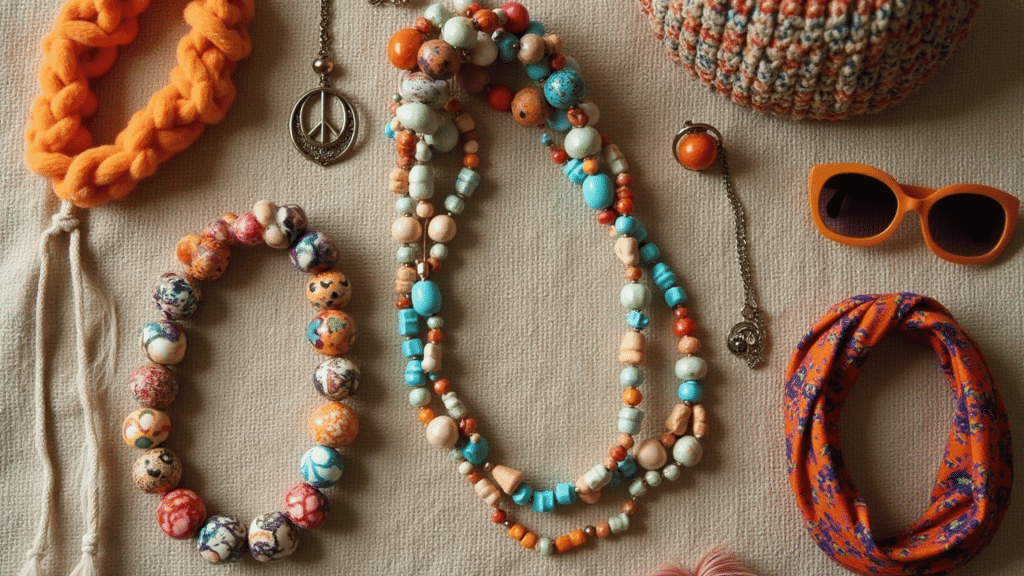
Accessories made every outfit more expressive. Headbands, beaded necklaces, peace pendants, macramé bags, and round sunglasses were staples of hippie fashion of the 60s.
Pro Strategy: Switch vintage scarves into headbands or belts to add a bohemian touch.
Step 4: Hairstyles for a Free Spirit
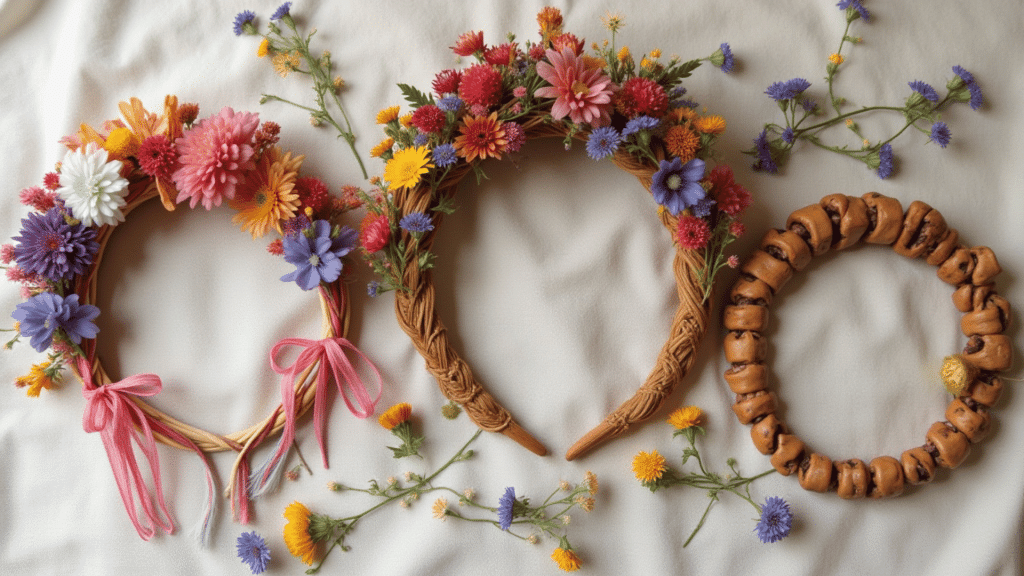
Hair was left long, loose, and natural, often parted in the middle. Braids, plaits, and afros became powerful symbols of self-expression and identity.
Pro Strategy: Weave flowers or colorful threads into your braids or curls for a modern flower-power effect.
Step 5: Footwear That Feels Natural
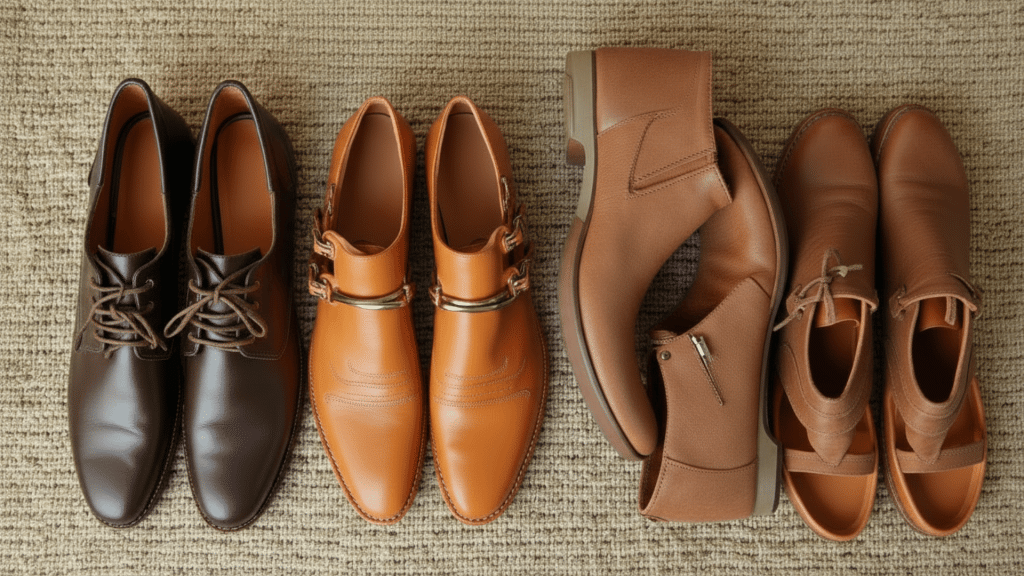
Hippies favored comfort and connection to the earth. Sandals, moccasins, and simple boots were common, with many choosing to go barefoot at festivals.
Pro Strategy: Style platform sandals or leather flats with flares for a wearable retro twist.
Ways to Wear 60s Hippie Fashion Today
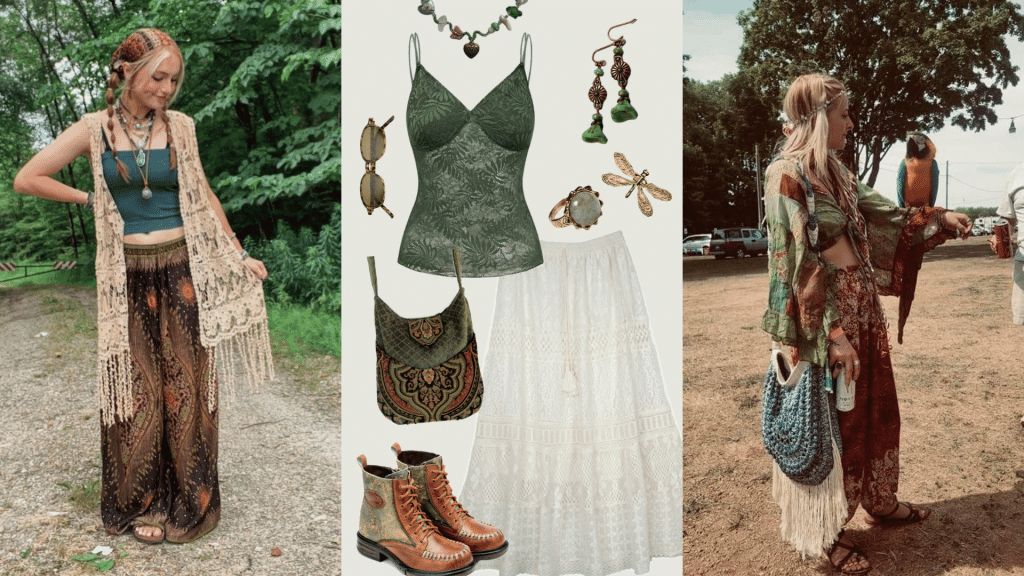
The beauty of hippie 60s fashion lies in its diversity. Every piece told a story, and every outfit was an act of self-expression.
Today, you can revive that spirit with modern pieces while staying true to the roots of hippie fashion. Here are seven style inspirations to spark your creativity:
1. The Classic Festival Look
A pair of faded bell-bottoms teamed with a tie-dye T-shirt brings instant hippie 60s fashion vibes. Add a suede fringe vest and round sunglasses to complete the look.
This look is the final nod to Woodstock, capturing the carefree joy of music, movement, and community.
- Key Vibe: Carefree energy, bold colors, and clothes made for dancing under the sun.
- Perfect For: Music festivals, outdoor concerts, and summer road trips.
- Modern Revival: Pair vintage-inspired flares with a bright tie-dye crop top and oversized sunnies for any summer festival.
2. The Boho Maxi Moment
Flowing maxi dresses in floral or paisley prints echo the carefree energy of the era. Layer with a lightweight kimono or crochet shawl for a modern twist.
This style radiates natural femininity, blending comfort with the bohemian spirit of the hippie 60s fashion movement.
- Key Vibe: Natural femininity, free-flowing movement, and a love for natural comfort.
- Perfect For: Garden parties, beach strolls, or casual weekend brunches.
- Modern Revival: Style a thrifted maxi dress with layered necklaces and flat sandals for a chic, bohemian day look.
3. The Free-Spirit Traveler
Channel the global influence of the movement with a colorful Indian tunic or kaftan, styled with wide belts and beaded necklaces. Barefoot sandals or soft leather flats add an earthy finish.
It’s a look that speaks of wanderlust and the desire to connect with cultures and traditions beyond one’s own.
- Key Vibe: Thrill, wanderlust, and cultural fusion with a nod to global traditions.
- Perfect For: Summer vacations, coastal getaways, or relaxed weekend markets.
- Modern Revival: Wear a flowing kaftan with woven sandals and handmade jewelry for an easy, globe-trotting aesthetic.
4. The Denim Dreamer
Follow the love for denim by pairing high-waisted flares with a patchwork jacket. Hand-painted or embroidered designs added a personal touch.
This outfit captures the rugged, artistic side of hippie 60s fashion, blending practicality with rebellion.
- Key Vibe: Rugged, laid-back, and effortlessly cool.
- Perfect For: Casual nights out, city strolls, or creative meetups.
- Modern Revival: Combine wide-leg jeans with a vintage denim jacket and platform boots for a bold fashion statement.
5. The Psychedelic Star
Make a bold statement with neon tie-dye shirts, patterned pants, or a swirling mini dress. A wide-brimmed hat adds festival-ready flair.
This look captures the kaleidoscopic energy of a style born from music, art, and a fearless celebration of color.
- Key Vibe: Color, chaos, and creativity inspired by psychedelic culture.
- Perfect For: Music festivals, themed parties, or bold street style looks.
- Modern Revival: Try a tie-dye slip dress or clashing prints with bold jewelry to bring the spirit of the 60s into today.
6. The Peaceful Poet
Opt for a loose peasant blouse tucked into a flowing skirt, accented with natural jewelry and comfortable footwear. This look channels the romantic, earthy side of 60s hippie fashion.
It is soft, soulful, and deeply connected to the ideals of peace, poetry, and quiet resistance.
- Key Vibe: Dreamy, romantic, and nature-inspired.
- Perfect For: Open mics, casual dates, or relaxed afternoons at the park.
- Modern Revival: Pair a flowing skirt with a boho blouse and stacked bangles for a timeless, relaxed vibe.
7. The Flower Child Look
A simple cotton or linen dress paired with natural details embodies the iconic flower power look. Hair adorned with blooms turned everyday moments into symbols of love and peace.
It is a style that radiates innocence and optimism, evoking the hippie dream of harmony with the earth.
- Key Vibe: Gentle, spiritual, and connected to nature.
- Perfect For: Summer picnics, outdoor gatherings, or carefree festival days.
- Modern Revival: Slip on a pastel maxi dress, add a daisy crown, and cherish your inner 60s hippie girl.
The Spirit Still Lives On
Hippie 60s fashion proved that clothing could be more than just a piece of fabric. It became a powerful tool for social change and self-expression.
The movement’s focus on peace, love, and individuality has created enduring styles that continue to influence modern fashion today.
This fashion revolution showed that style could challenge society, inspire movements, and create lasting cultural change that affects generations.
Ready to channel your inner flower child? Start incorporating bohemian pieces into your wardrobe and join the enduring movement of peace, love, and great style.

